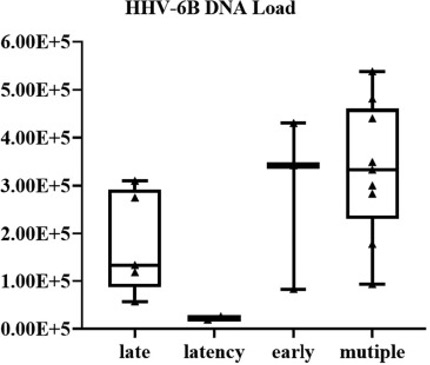Previous reports (Fotheringham 2007) have found higher levels of HHV-6B DNA and antigens in brain tissue resected to treat mesial temporal lobe epilepsy (MTLE), but not in control tissue, as summarized in Komaroff 2020. A new paper from several medical centers in China examined surgically resected neocortical or hippocampal specimens from 49 patients with MTLE and 19 people with serious brain trauma or a vascular event who had tissue resected from the same parts of the brain.
The team found:
- Significantly more mesial temporal lobe epilepsy (MTLE) patients (39%) had HHV-6B DNA in brain tissue compared to controls (5%, P<0.001);
- Specimens in which viral DNA was present were also positive for viral antigens;
- There was an upregulation of IL-1a, IL-2 and IL-7 mRNA in MTLE brain tissues, perhaps more so in tissue expressing HHV-6B early antigens;
- HHV-6B early antigen (P41) was found in 3 MTLE patients (6%), late antigen (gp116/54/64) in 5 patients (10%), latent antigen (U94) in 8 patients (16%), and multiple antigen (early and late or/and latent) 9 patients (18%), whereas none of these HHV-6B proteins were found in control brain tissue;
- As might be expected, DNA load was higher specimens with early, late or multiple antibodies than in the group with latent antigen (Figure 1),.

Figure 1 – HHV-6B DNA viral load in subgroups stratified by type of HHV-6B antigen in 19 cases of with positive PCR for HHV-6B.
The investigators suggest that the increased production of several cytokines, particularly in patients with reactivated HHV-6B infection, may contribute to the pathogenesis of seizures in those cases of MTLE that are associated with HHV-6B. The authors note that while viral DNA is difficult to detect in the cerebrospinal fluid (CSF), up-regulation of IL-1a and IL-7 in the CSF may be useful as an indirect marker of HHV-6B infection.
Read the full study here: Wang 2022

